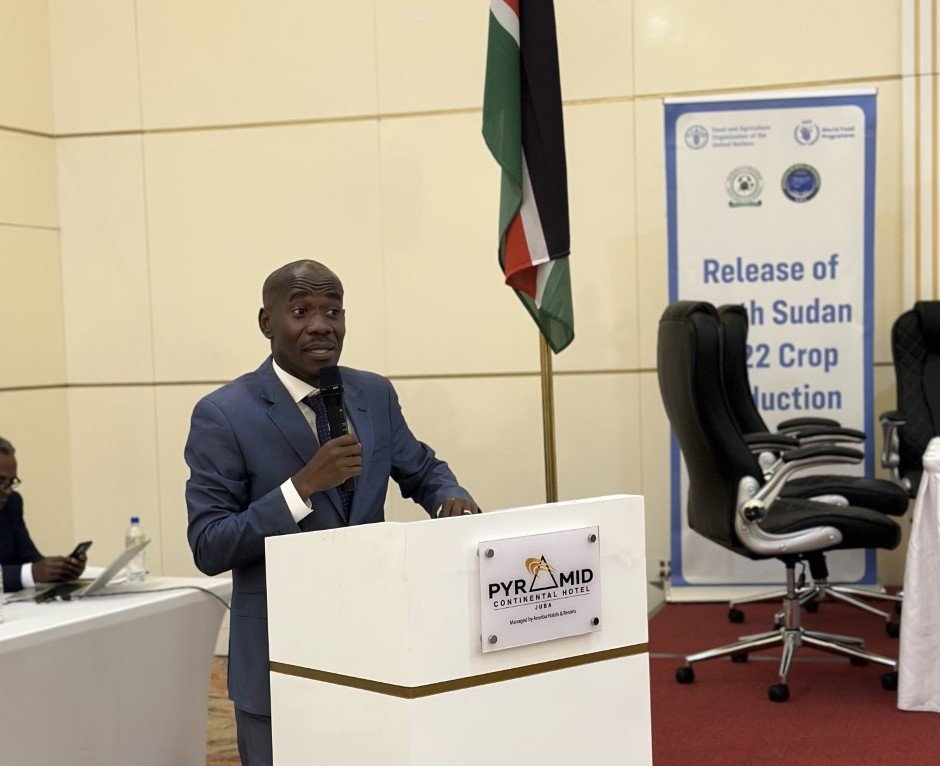By Richard Sultan
Poverty amid plenty in South Sudan’s Western Equatoria state
Muzofuli David’s granaries are full to the brim, with bags of dried cassava, maize and groundnuts from last season’s harvests. But with little prospects of the produce ever getting to market he is staring at another round of huge losses.
“For the past two years, friends and relatives have called me a fool for working so hard as the civil war rages on. My granary and the surrounding area have become the rotting zone of groundnuts, cassava and maize.
I harvest so much but I don’t have a proper storage or a market for the produce,” he says. David says he loses yearly at least 100kgs bags of dried cassava, maize and groundnuts every season due to a lack of proper storage and market for the produce. David’s story is common among farmers in the vast and fertile Western Equatoria state. The market issue is made worse by the poor condition of the road network between the counties in the state and other neighbouring states.
“When you look at the abundance of food in this state and relate it to the latest Integrated Food Security Phase Classification (IPC) latest data, it’s pure irony. The IPC data shows that about twothirds of the South Sudanese population (7.76 million people) will likely face acute food insecurity during the April-July 2023 lean season and 1.4 million children will be malnourished,” says Ezekiah Mangi, a community leader in Ezo County of Western Equatoria State.
Mangi says that with a proper road network, even the pastoral communities who make most of the country’s starving population will have surplus food for themselves and their cattle. The findings of the 2022 Crop and Food Security Assessment Mission (CFSAM) released in early March indicate a net
cereal production increase not only in the traditional farming zones but also in the swampy pastoralist areas. The assessment was done by the Food and Agriculture Organization of the United Nations (FAO) and the United Nations World Food Programme (WFP), in collaboration with the Ministry of Agriculture and Food Security and the National Bureau of Statistics.
Net cereal production was estimated at 936,200 tonnes in 2022, an 11.5 percent increase in production compared to the previous year. The cereal deficit is at 485,400 tonnes, 10.2 percent below the deficit estimated for 2022 and two percent below the 2018-2022 average.
The estimated harvested area in 2022 was 1,078,900 hectares, 8.4 percent above the 2021 level and 15.8 percent above the average of the previous five years. The increased production is attributed to security improvements in some areas, which allowed displaced households to return to their place of origin and engage in agricultural production and favourable rains over most cropping areas.
“Despite continued challenges, the 2022 Crop and Food Security Assessment Mission findings are encouraging.
It shows that South Sudan is in the right direction regarding food production. To increase food security in the country, South Sudanese need to be able to grow their food,” said Meshack Malo, FAO Representative in South Sudan.
“FAO supports farmers with seeds, tools, technical training and market development, as well as assisting in developing the seed sector which brings agriculture in the country one step closer to self-sufficiency.”
The increased production occurred despite several challenges farmers faced, including pests, wildlife and climate shocks. However, flooding, insecurity, high food and fuel prices, a depreciation of the South Sudanese Pound, reduced humanitarian resources and weak market integration all contributed to persistent food insecurity in many areas and posed challenges to food production. Around 130,000 hectares of cultivated land was damaged by floods, resulting in an estimated loss of 65,000 tonnes of cereals.
“Increased food production is welcome news and as we move forward producers must have the tools and support they need to be resilient in the face of a multitude of shocks,” said Mary-Ellen McGroarty, WFP Representative in South Sudan. “WFP is working with farmers to adapt to these shocks, for example in some areas that are prone to flooding we have worked with FAO to assist families to begin growing rice which thrives in waterlogged environments.
Programmes that improve resilience to shocks such as climate events and conflict are critical if farmers are to continue to increase their annual production and become food secure.” Despite the positives from the above assessment, community leaders like Mangi and others from the pastoral communities believe that food selfsufficiency is when road networks and security are in place.
“If the road from Bor, the capital of Jonglei (a predominantly pastoralist State and one of the worst flooded) to Yambio, the capital of Western Equatoria is fine, I will just send my children there to buy foodstuffs cheaply. As you know, we only grow sorghum,” says Deng Monyrach, a community leader from Bor currently based in Juba.

